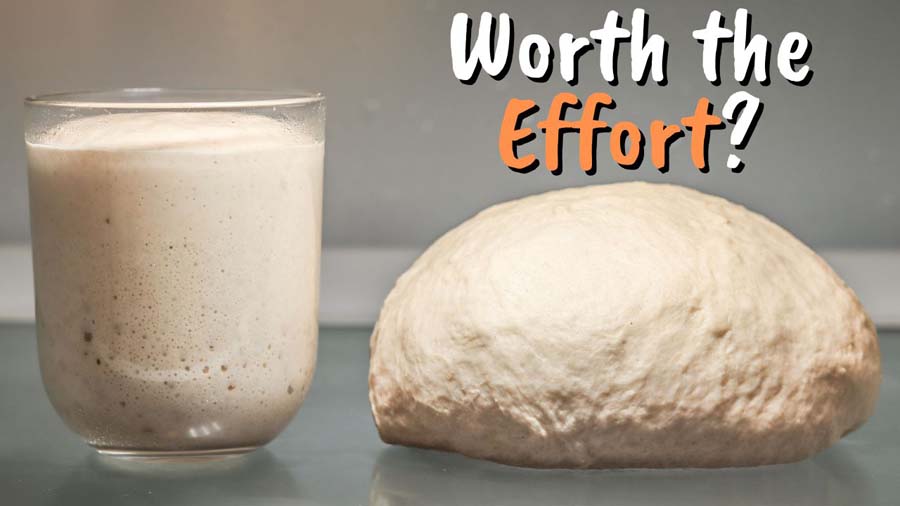Ever since I published my pre-ferment vs cold ferment video I have been getting questions about whether it is worth using both methods for the same dough. Besides questions I have also been getting comments from people who swear by using both methods combined to great success.
In the video I concluded that cold fermentation beats pre-ferments in every aspect. It removes the extra step of making a pre-ferment and it develops far more flavour. Less work, better results – it’s hard to argue with that.
And in the comments, I have been telling people that using a pre-ferment when cold fermenting would not add much benefit. Again, we would be creating extra work, but for what? I argue that simply leaving the whole dough in the fridge to ferment for longer would develop the flavour more thus cancelling the need for a pre-ferment in the first place.
Of course, I do like to simplify the breadmaking process as much as possible, so I may just be very biased towards that.
Now, when it comes to simply comparing cold fermentation vs the use of a pre-ferment, then the answer is a bit more nuanced than I made it look. As a pre-ferment alone can change the bread and make it different from what cold fermentation alone would produce.
One great comment under that video mentioned baguettes as an example. I totally agree with that. Cold bulk fermented dough would intensify the flavour and make the bread chewier, but a pre-ferment can make it lighter and airier with a thinner crust while still adding a bit of flavour (not as much as cold ferment though).
The test.
We will make three breads which will contain the same ingredients. The first one will be fully mixed and left in the fridge to bulk ferment for 24 hours. The second one will be made with a pre-ferment which will be fermented at room temperature for 12 hours. Then the full dough will be mixed and left in the fridge for 12 hours.
The first and second doughs will take the same amount of time to make. It is the main comparison I want to make because as I explained above – why not leave the whole dough in the fridge for longer? It will take the same amount of time, but it will be less work than using a pre-ferment.
The third dough I made was just for comparison’s sake to see how different it would be from the first two. It was fully mixed, and bulk fermented in the fridge for 12 hours, so it would take half the time to ferment compared to the other two.
All three contained 180g white bread flour, 20g whole wheat flour, 4g salt, 130g water. The dough with pre-ferment contained slightly less yeast because it would have more yeast in the form of the pre-ferment. The first and last doughs had 2g yeast but the one with pre-ferment had 1.7g yeast.
The pre-ferment of the second dough was made using all (20g) of the whole wheat flour, 20g white flour, 40g water, and a pinch (0.1g) yeast. It’s poolish.
When it came to final proofing the pre-ferment dough took 30 minutes longer to rise. To be fair I could have left all of them to rise for longer as they were slightly under proofed. But that makes little difference in this test as the time spent fermenting up until final proofing is what counts most.
The results.
Again, I may be biased and perhaps my taste buds are not as sensitive, but I could not tell a difference in taste between the 24-hour bulk fermented bread vs the one that was made with a pre-ferment.
Texture wise the 24-hour fermented bread had a slightly more substantial crumb. It was slightly chewier but not by much. Definitely not enough to warrant using a pre-ferment to change that characteristic. I would have never known the difference if I tried them on separate occasions.
The 12-hour bulk fermented bread was predictably less flavourful and less chewy than the other two.
So, is it worth using a pre-ferment when cold fermenting? Not according to the results of this test. Perhaps some doughs would react slightly differently, and the texture may vary a bit more, but personally I will probably never combine these two methods again. It just makes no sense to me.
The choice of which methods to use and when to use it is up to each of us. And only the person eating can say what is good and what is not. Try it for yourself and see what you like best. Until you have compared things side-by-side you will not be able to judge them accurately.
Watch the video here



